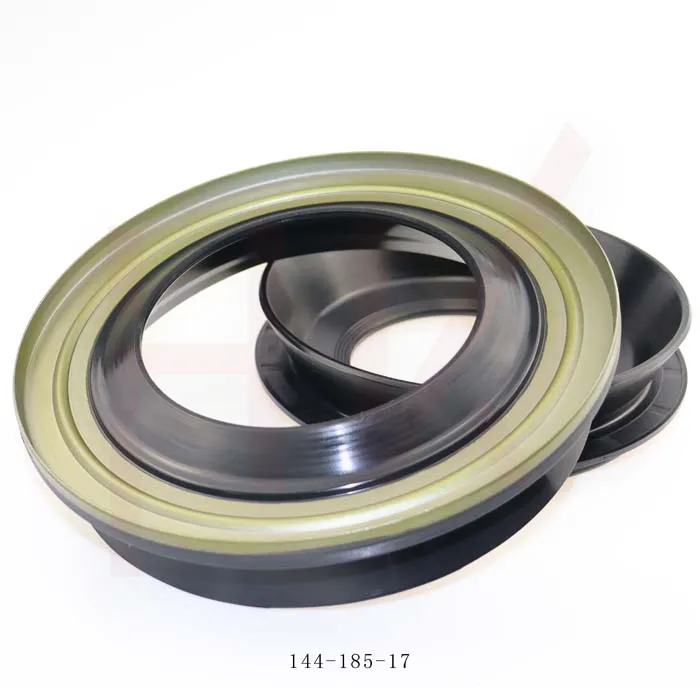Novemba . 08, 2024 18:46 Back to list
hydraulic cylinder seal kit replacement
Hydraulic Cylinder Seal Kit Replacement A Comprehensive Guide
Hydraulic cylinders are essential components in various machinery and equipment, including construction, manufacturing, and automotive applications. One of the critical aspects of maintaining these cylinders is ensuring that their seals are in optimal condition. Over time, seals can wear out due to exposure to harsh working environments, high pressures, or simply due to age. When seals fail, it can lead to leaks, reduced efficiency, and even catastrophic failures. Therefore, conducting a hydraulic cylinder seal kit replacement is a vital maintenance task that should not be overlooked.
Understanding Hydraulic Cylinder Seals
Hydraulic cylinders utilize seals to prevent hydraulic fluid from leaking out of the cylinder while also ensuring that no contaminants enter the hydraulic system. Typical seals include rod seals, piston seals, and wiper seals. Rod seals are located where the piston rod exits the cylinder, piston seals are positioned within the cylinder to ensure pressure is maintained, and wiper seals keep dirt and debris from entering the system. Each of these seals plays a critical role in the overall functionality and efficiency of the hydraulic system.
Why Replace Hydraulic Cylinder Seal Kits?
1. Avoiding Leakage One of the most significant reasons to replace seal kits is to prevent hydraulic fluid leaks, which can not only lead to efficiency losses but may also create safety hazards on the job site.
2. Enhancing Performance Worn or damaged seals can cause a drop in performance, affecting the cylinder’s responsiveness and speed. By replacing the seal kit, the system regains its operational efficiency.
3. Extending Equipment Life Regular maintenance, including seal replacement, can significantly extend the lifespan of hydraulic equipment. By preventing leaks and reducing unnecessary wear, you save on costly repairs and replacements in the long run.
4. Environmental Concerns Leaking hydraulic fluid can be detrimental to the environment. Replacing seals before they fail helps minimize ecological impact and ensures compliance with environmental regulations.
Steps for Replacing Hydraulic Cylinder Seal Kits
hydraulic cylinder seal kit replacement

1. Preparation and Safety Measures Before beginning the replacement process, ensure that you wear appropriate personal protective equipment (PPE), such as gloves and goggles. Make sure to depressurize the hydraulic system and relieve any built-up pressure to prevent accidents.
2. Disassembly Carefully disassemble the hydraulic cylinder. Use tools like wrenches and pliers but be cautious not to damage any components. It’s recommended to take photos during disassembly to aid in the reassembly process.
3. Remove Old Seals Once disassembled, carefully remove the old seals. Use a seal puller or a similar tool to avoid scratching or damaging the cylinder bore. Inspect the components for wear or damage and note any abnormalities.
4. Clean the Cylinder Thoroughly clean the cylinder and all components to remove any debris, old seal material, or dirt. A clean surface is crucial for the proper installation of new seals. Use hydraulic fluid or appropriate cleaning solutions, but ensure the surfaces are dry before proceeding.
5. Install New Seals Select the correct seal kit that matches your hydraulic cylinder specifications. Carefully install the new seals, ensuring they fit snugly into their respective grooves. Avoid twisting or pinching the seals during installation, as this can lead to premature failure.
6. Reassemble the Cylinder Reassemble the hydraulic cylinder, ensuring that all bolts and fittings are torqued to the manufacturer’s specifications. Double-check that everything is aligned correctly to avoid future issues.
7. Test the System After reassembly, refill the hydraulic fluid and carefully bleed the system to remove any air. Start the machinery and monitor the hydraulic cylinder for any signs of leaks or malfunctions.
Conclusion
Replacing hydraulic cylinder seal kits is a crucial maintenance task that can save time, money, and enhance the safety and efficiency of hydraulic systems. By following the steps outlined above, you can successfully replace seals and ensure your equipment operates at peak performance. Regular inspections and timely seal replacements will prolong the life of your hydraulic components and contribute to the overall success of your operations. Always consult the equipment manual for specific guidelines and recommendations for your hydraulic system.
-
Unlocking the Potential of Hydraulic Systems with Essential Sealing Solutions
NewsAug.06,2025
-
Unleash the Power of Your Hydraulic Systems with Our Premium Seal Kits
NewsAug.06,2025
-
Specialized Hydraulic Seal Kits for Breakers, Pistons, and Presses
NewsAug.06,2025
-
Revitalize Hydraulic Systems with Premium Repair and Seal Kits
NewsAug.06,2025
-
Fortify Your Cylinders with Premium Sealing Solutions
NewsAug.06,2025
-
Elevate Hydraulic System Reliability with Specialized Seal Kits
NewsAug.06,2025
-
TCN Oil Seal Metal Ring Reinforcement for Heavy Machinery
NewsJul.25,2025
Products categories
















